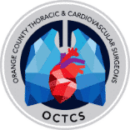Heart disease, also known as cardiovascular disease, is the leading cause of death among both men and women in the United States. Heart disease encompasses some of the following conditions:
- Coronary artery disease
- Arrhythmia
- Atrial fibrillation
- Cardiomyopathy
- Heart infections
- Congenital heart defect
- Peripheral artery disease
- Stroke
- Angina
- Valve damage
Despite its high death rate, heart disease usually occurs when certain risk factors, controllable by the patient, are present. While a family history of heart disease and increasing age cannot be controlled, there are several lifestyle changes patients can make to help reduce their risk of heart disease and improve their health as well.
What are the Risk Factors for Heart Disease?
Patients most likely to develop heart disease have the following risk factors:
- High blood pressure
- A close relative with heart disease
- A high LDL cholesterol level
- High triglycerides
- Diabetes
- Smoking
- Kidney disease
- Overweight
- No regular exercise program
Diagnosing Heart Disease
If a patient has risk factors that would cause them to develop heart disease or they have already experienced symptoms, the doctor may recommend the following tests:
- Exercise stress test
- Electrocardiogram (EKG)
- Chest X-ray
- Blood tests
The results of these tests may indicate the need for further testing.
Steps to Preventing Heart Disease
The major steps to preventing heart disease include not smoking, exercising regularly and maintaining a healthy diet. These steps can also help prevent or avoid conditions such as high blood pressure, stress management, diabetes, high cholesterol and obesity, which can all contribute to the development of heart disease.
Quitting Smoking
Smoking is the most dangerous risk factor when it comes to heart disease. No amount of smoking is safe, and secondhand smoke should be avoided as well. The nicotine in cigarettes, as well as many of the other 4,800 chemicals, can increase the heart rate, constrict blood vessels and decrease the oxygen levels in the blood, causing permanent damage to the heart and blood vessels. Quitting smoking drastically lowers the risk of heart disease no matter the length of time the patient has smoked.
Exercising Regularly
Regular exercise is a valuable activity that can help patients look and feel better everyday, and it helps prevent numerous medical conditions. Exercise increases the blood flow to the heart and helps it pump more blood with less effort. It is recommended to get at least 30 minutes of physical activity five or more times a week in order to control high blood pressure, diabetes, cholesterol and achieve a healthy body weight. It is important to start slow and remember that any exercise is better than nothing.
Maintaining a Healthy Diet
A heart healthy diet is about more than just cutting back and eating less. It is important to receive enough nutrients from a variety of different foods including fruits, vegetables, whole grains and low-fat dairy products. Proper nutrition also plays a major role in other conditions such as blood pressure, cholesterol, obesity and diabetes. Balancing exercise with diet can be even more effective in keeping healthy and preventing heart disease.
There are several more ways that patients can reduce their risk for heart disease, including managing stress levels and diabetes, and limiting alcohol consumption. When practiced together, these steps can help patients live a happy and healthy life for many years to come. While these steps may seem simple, many people lack the commitment to protect themselves against heart disease.

